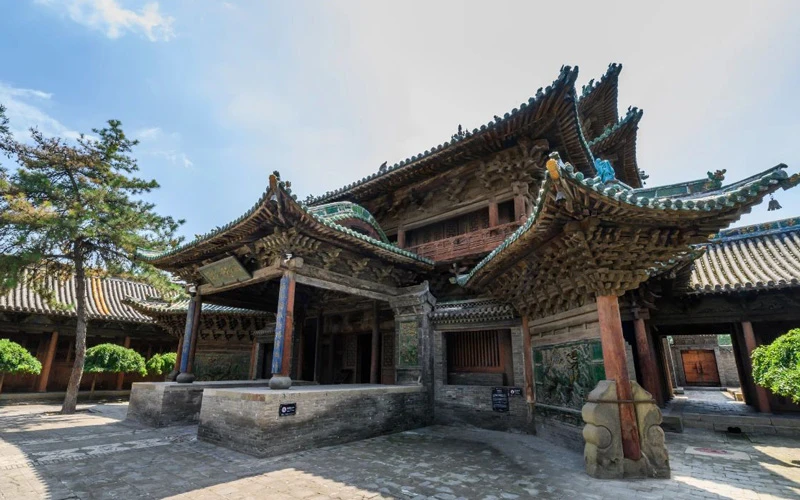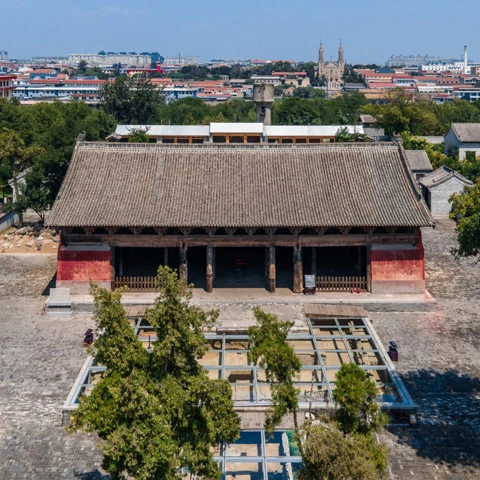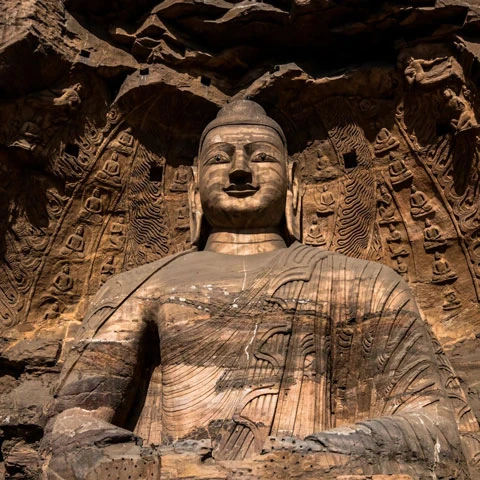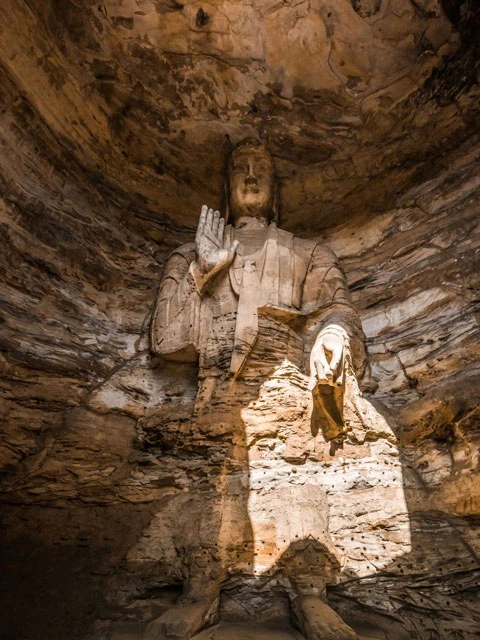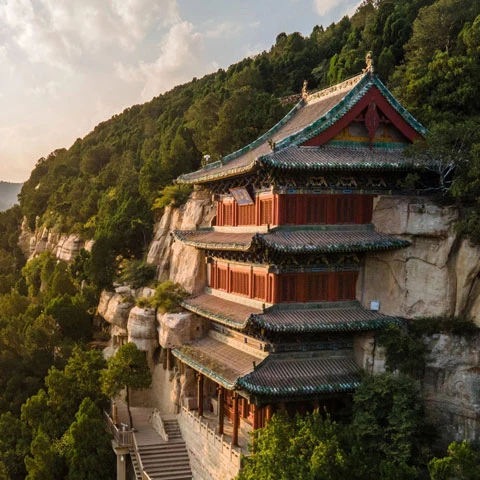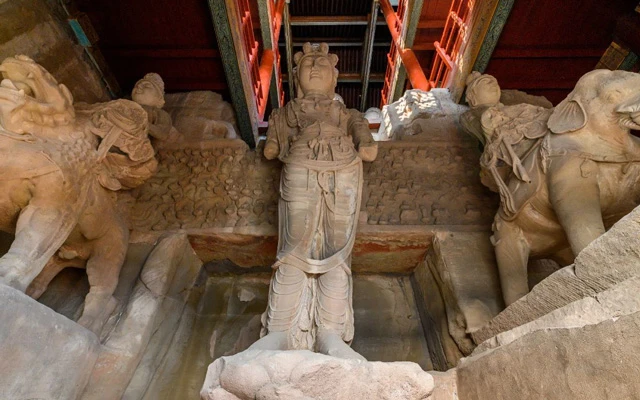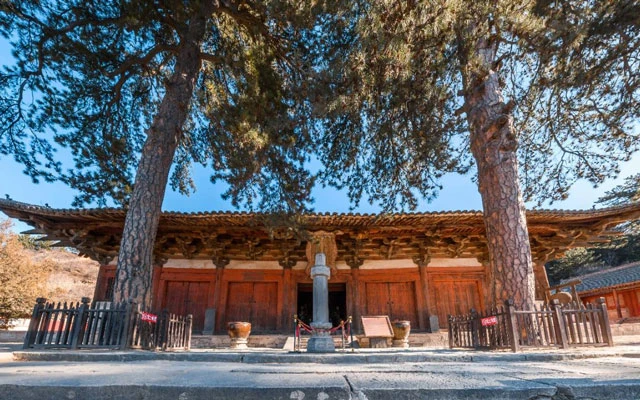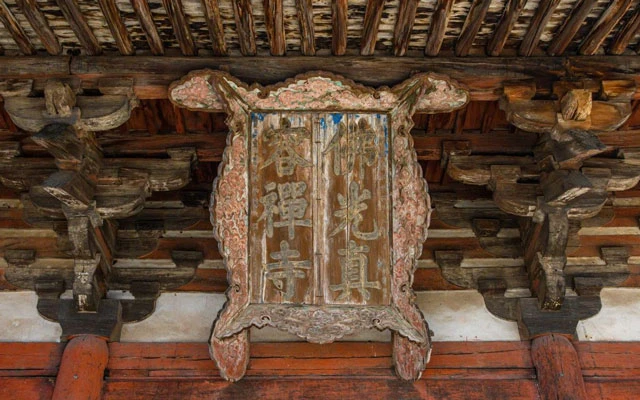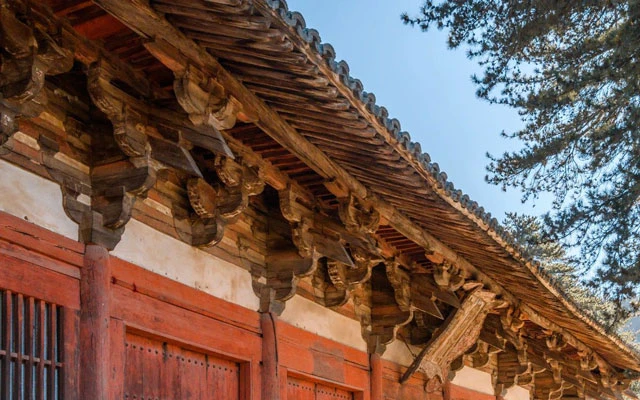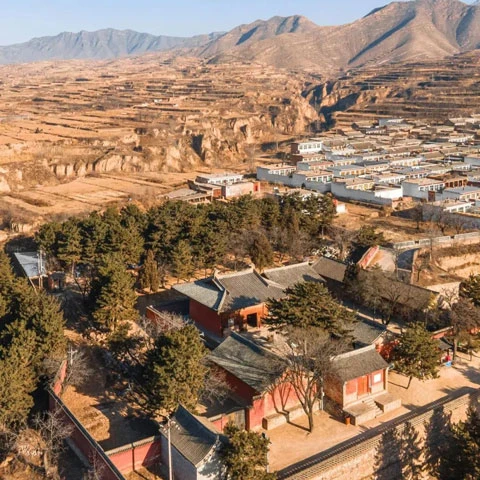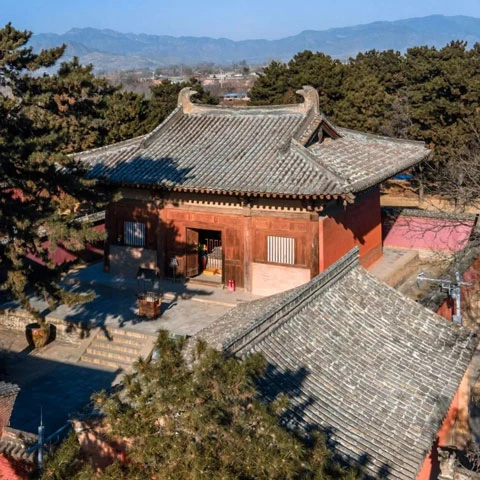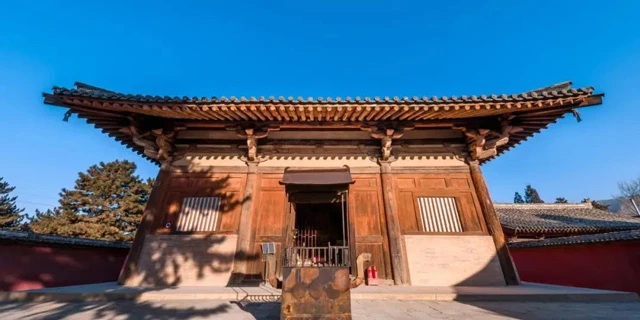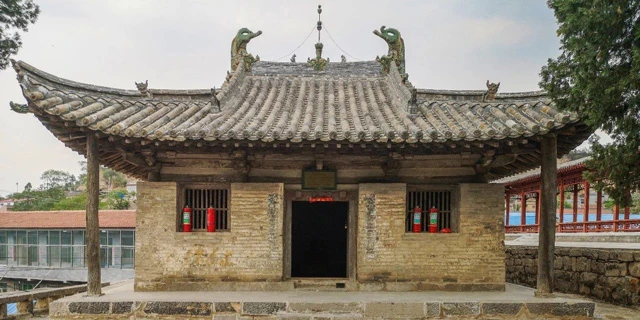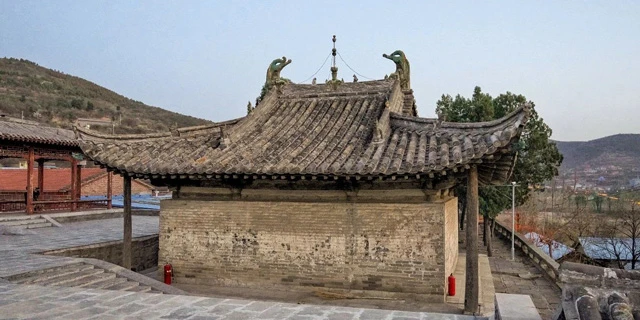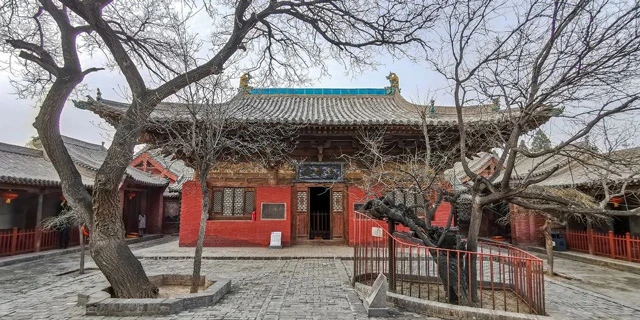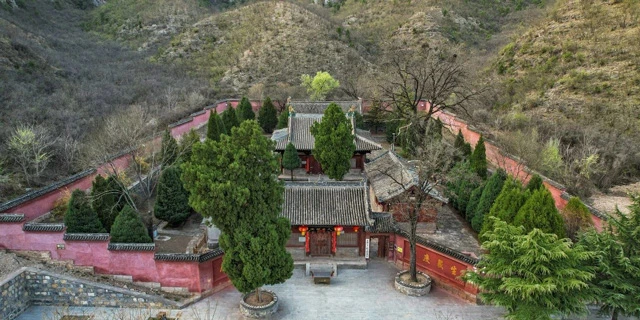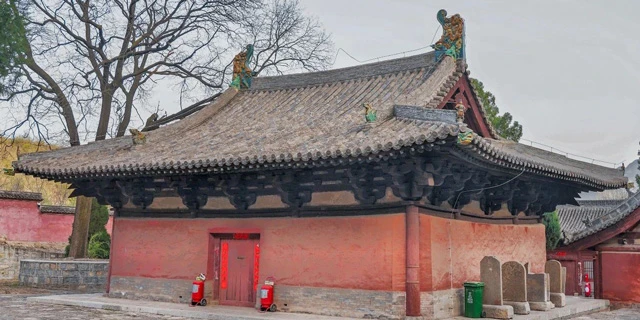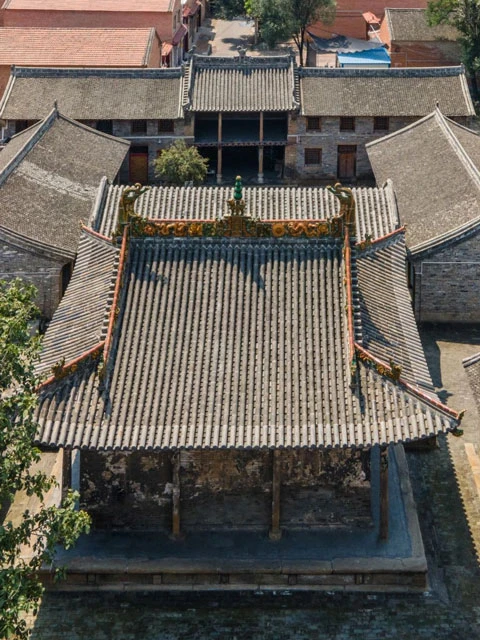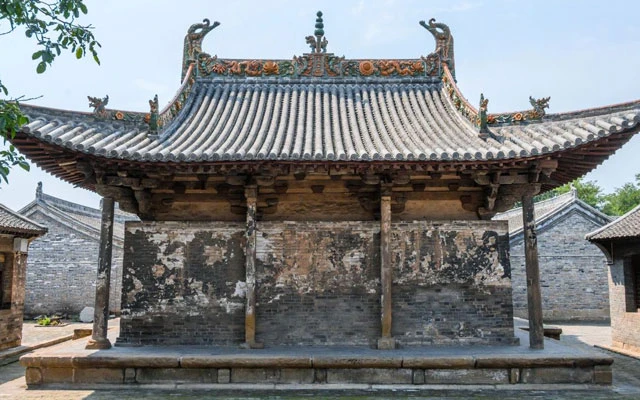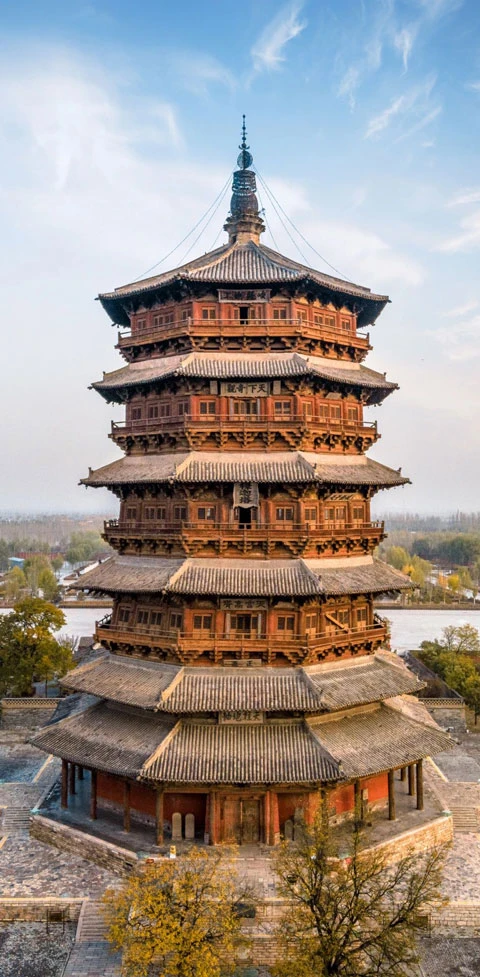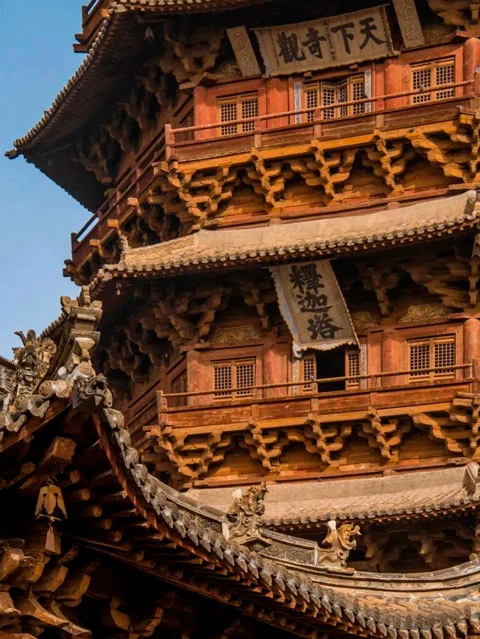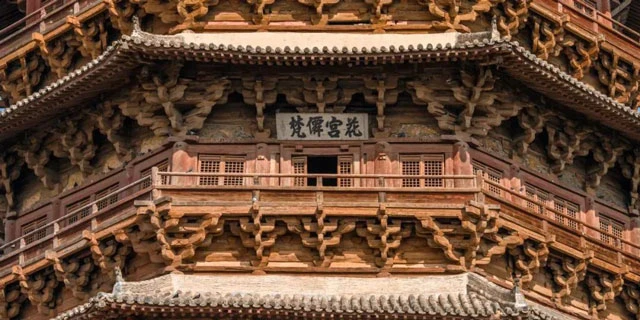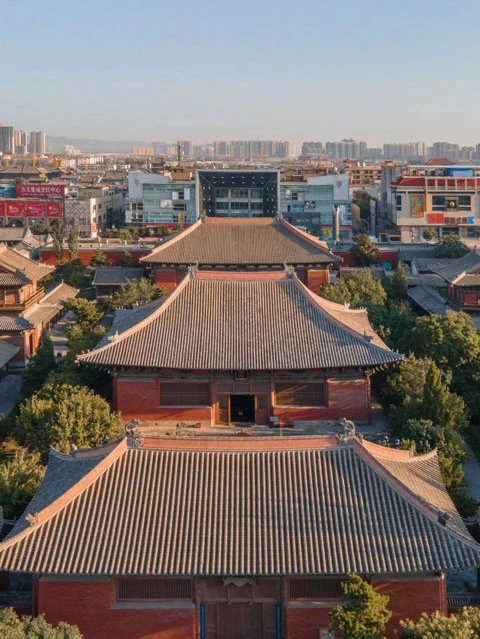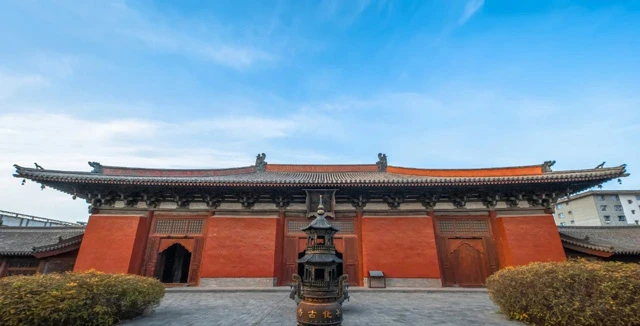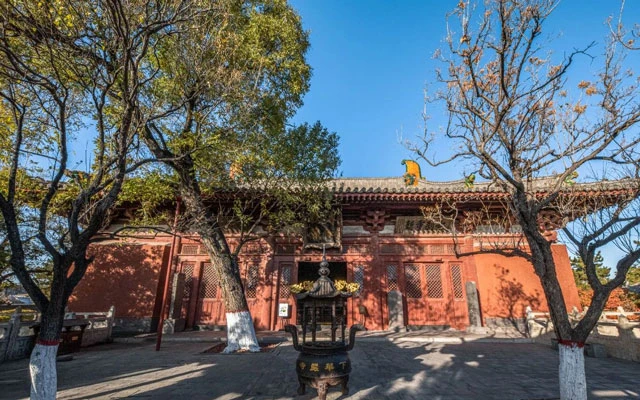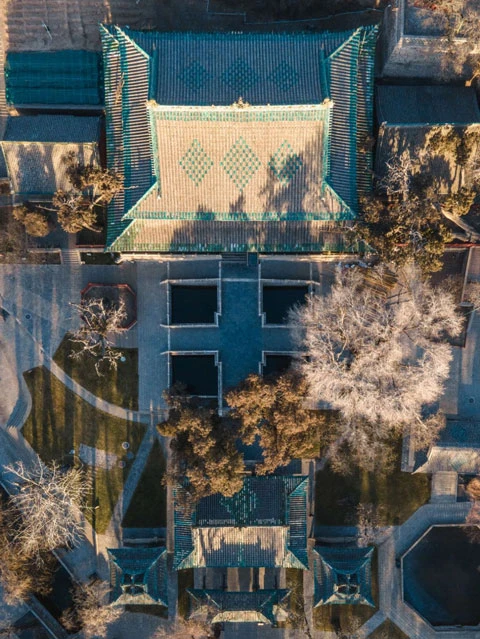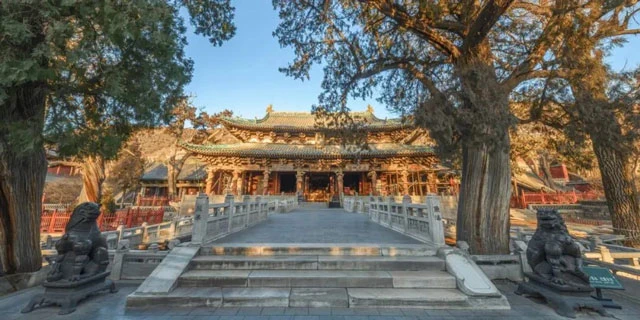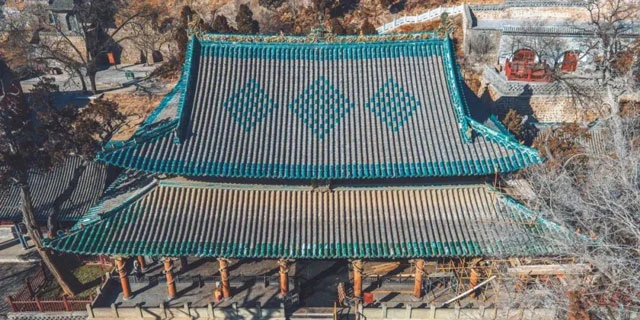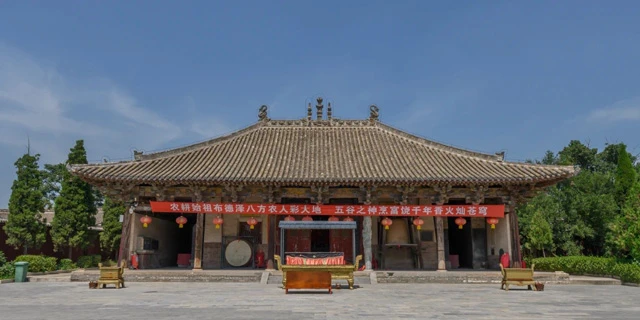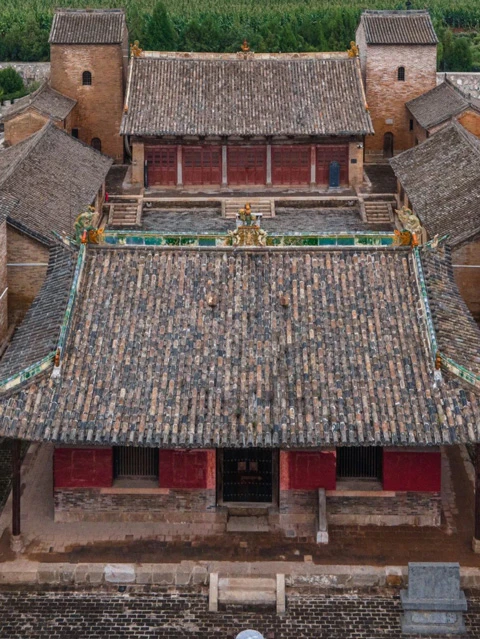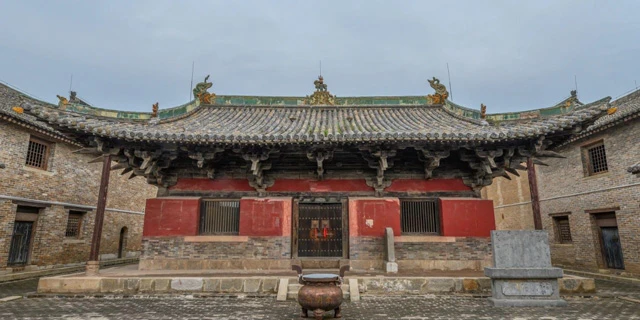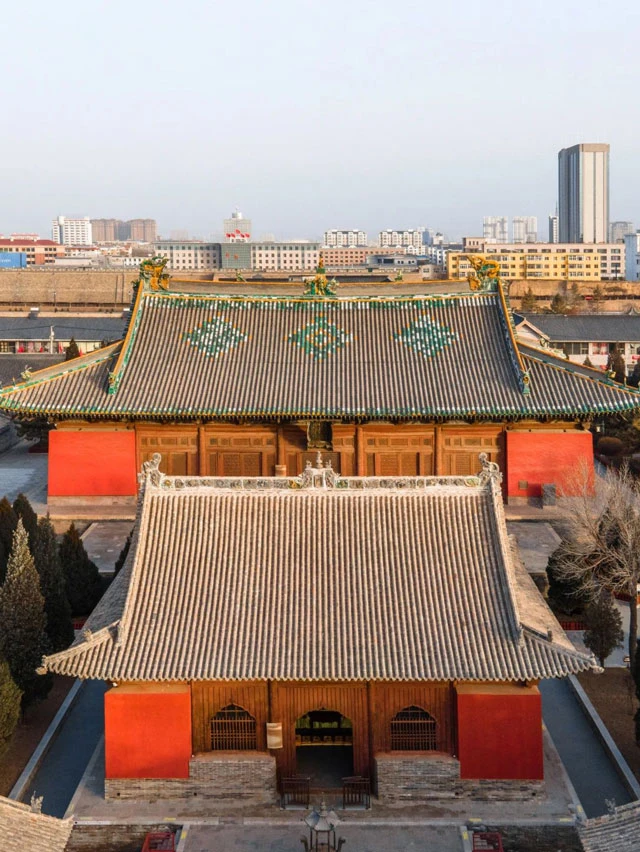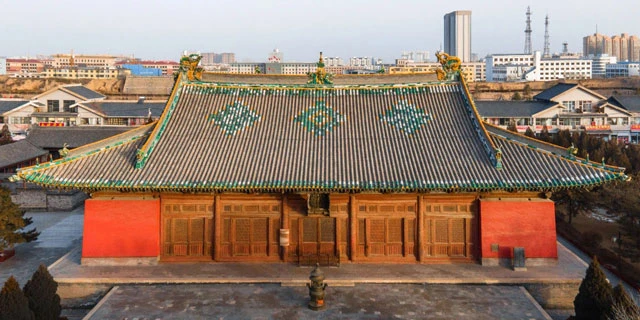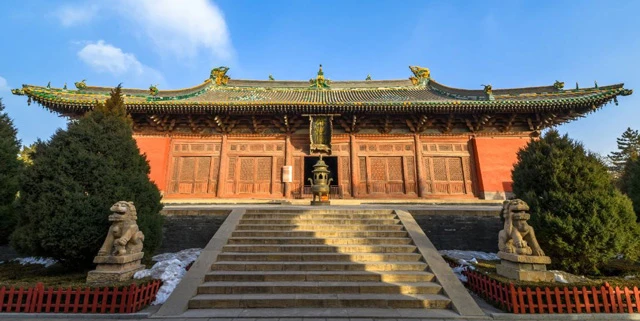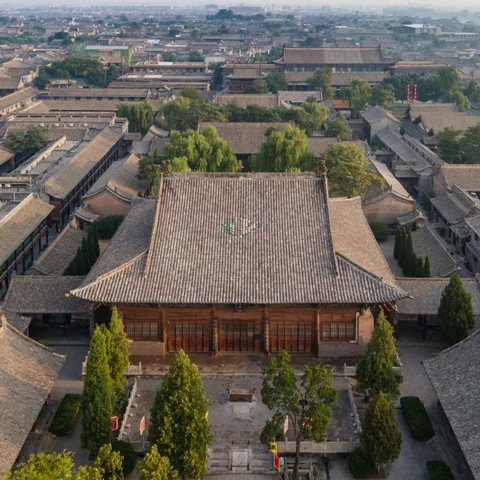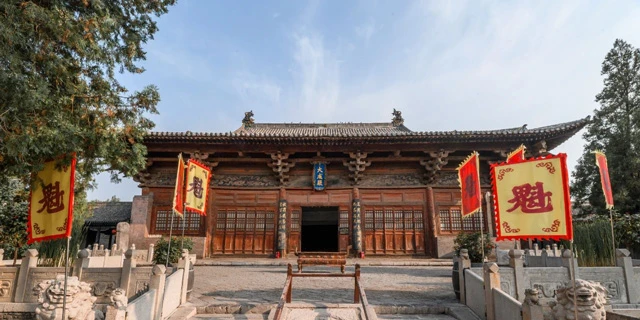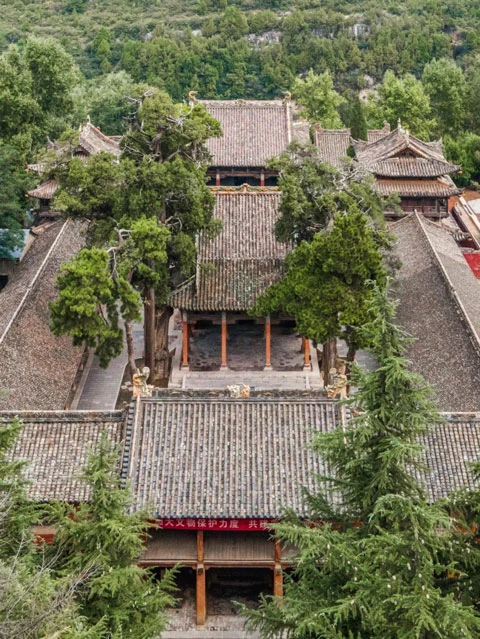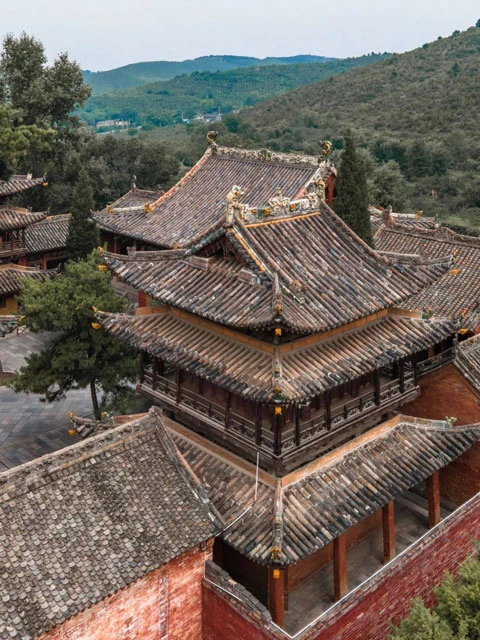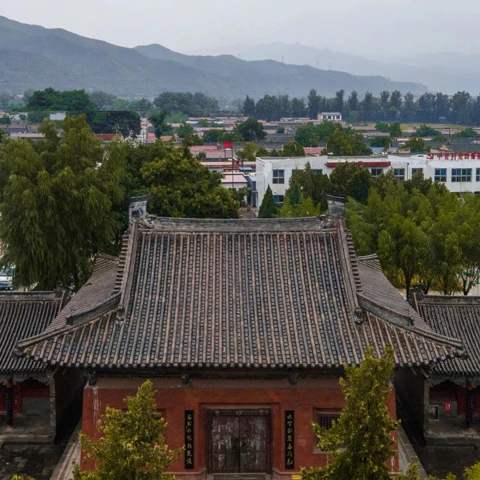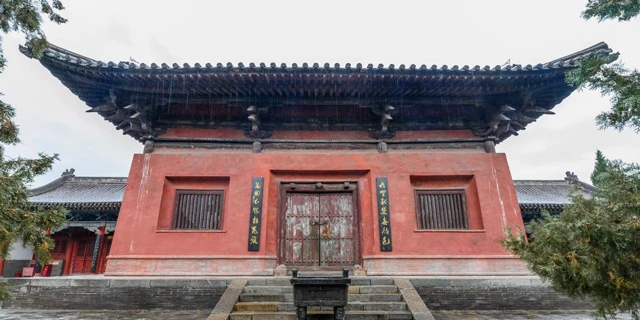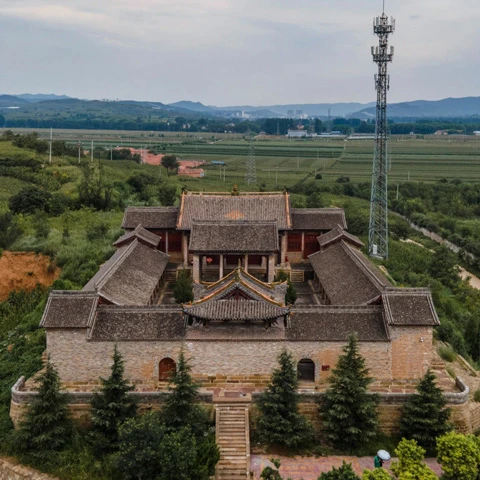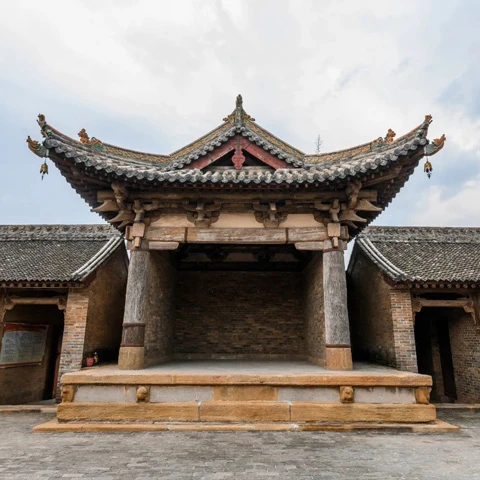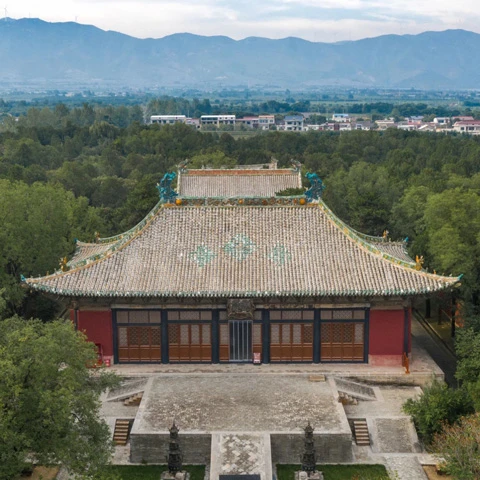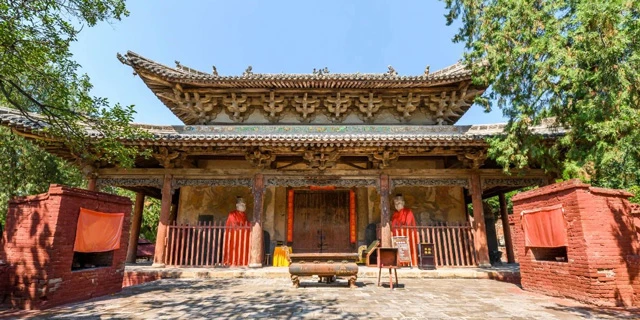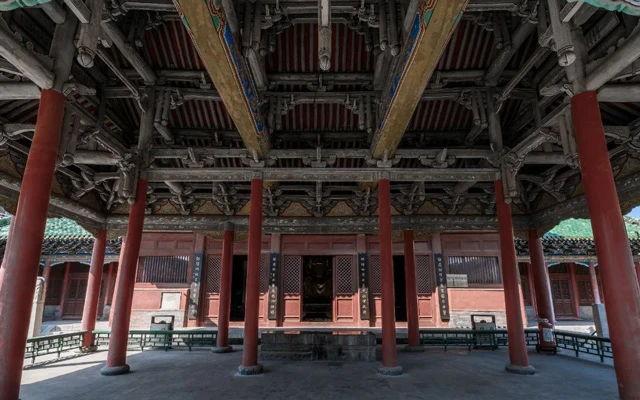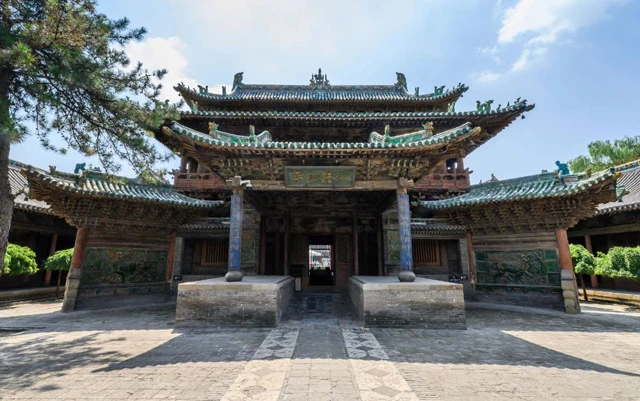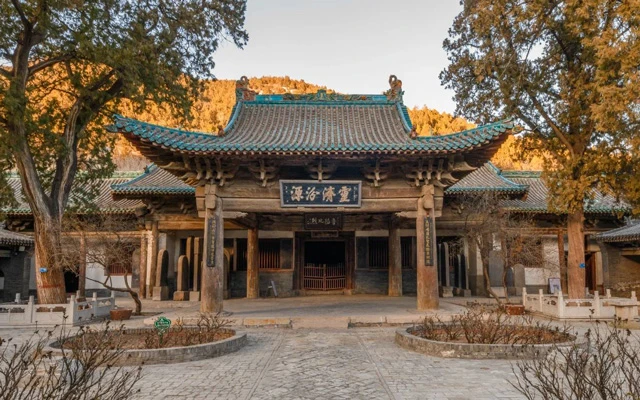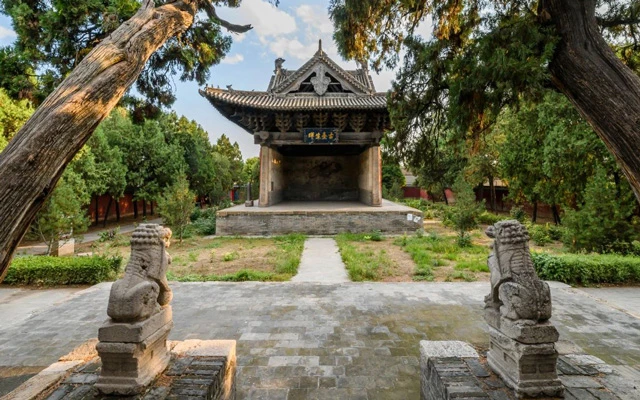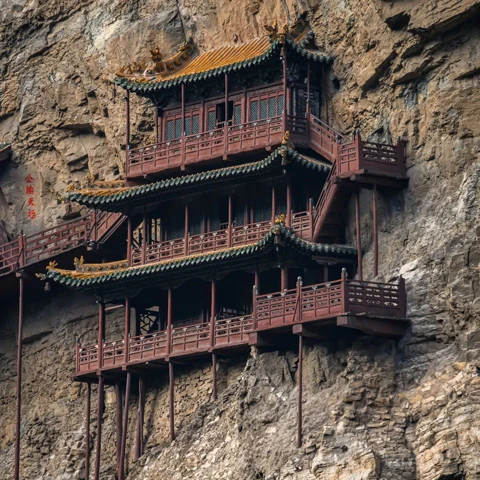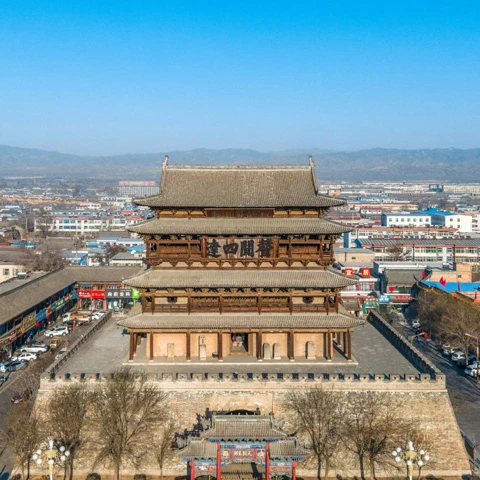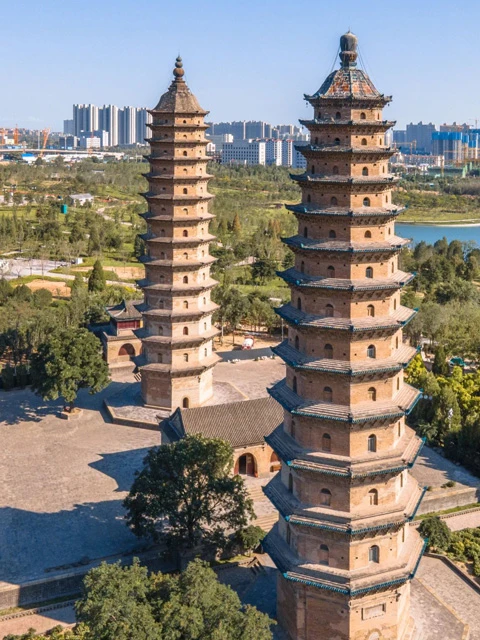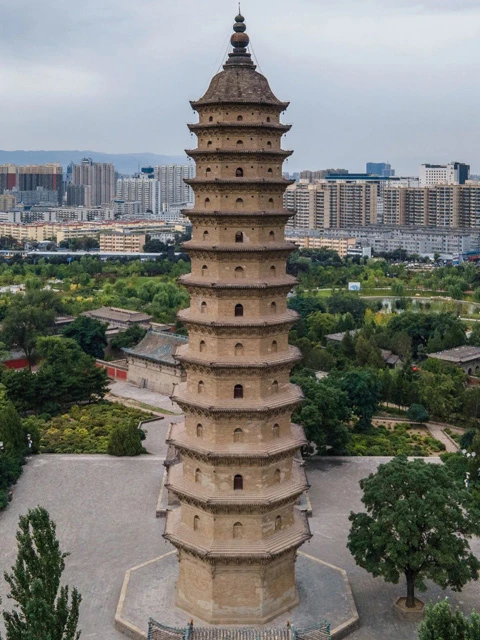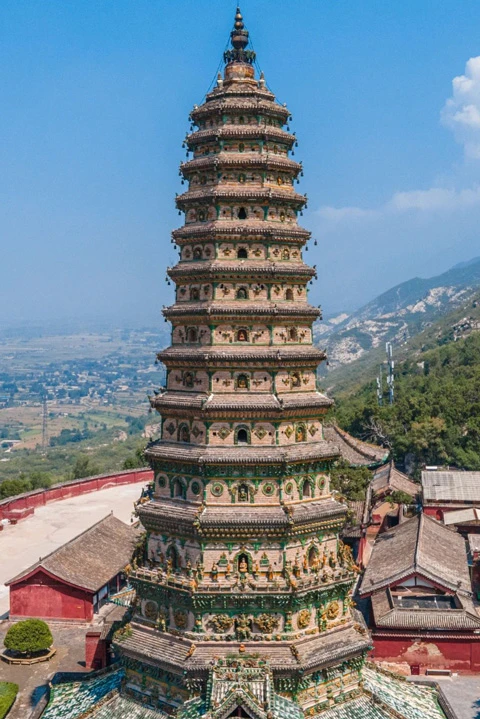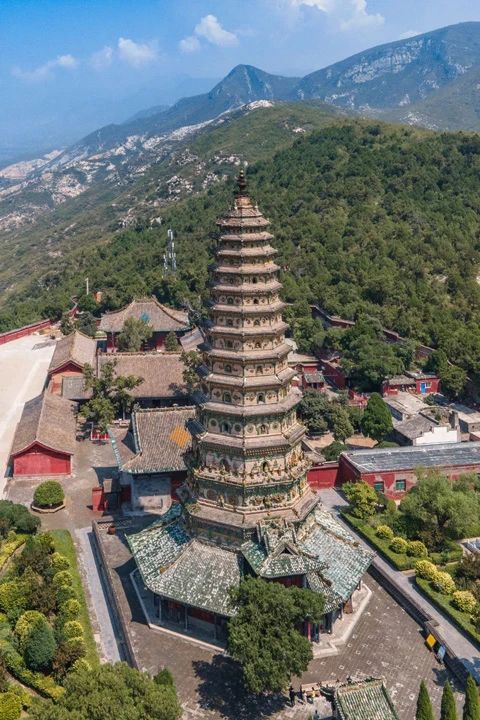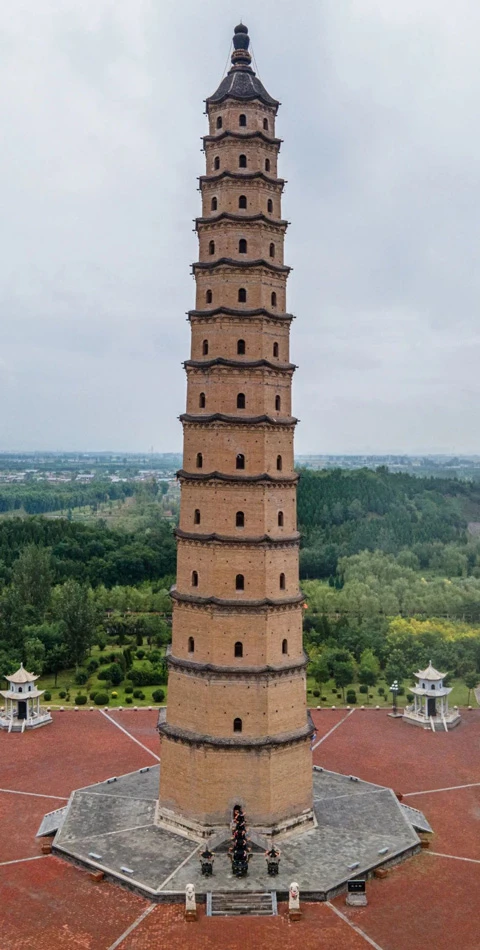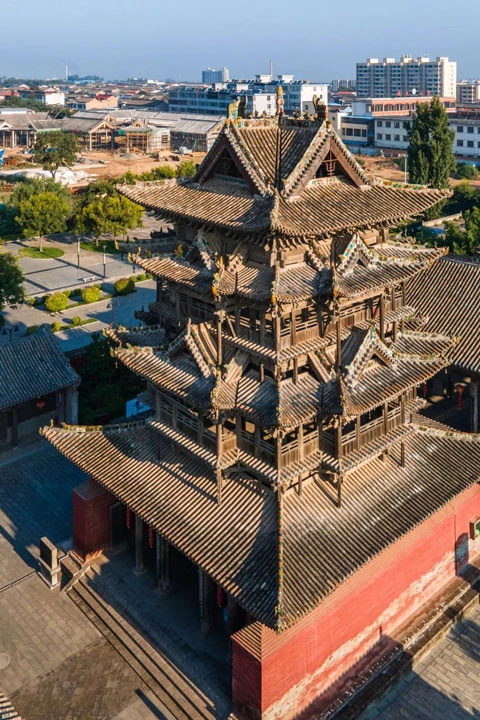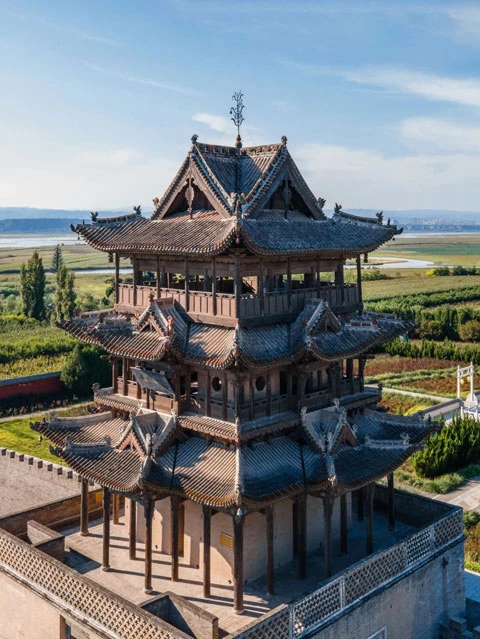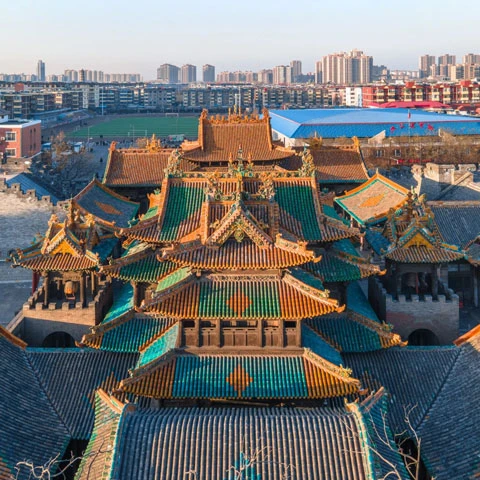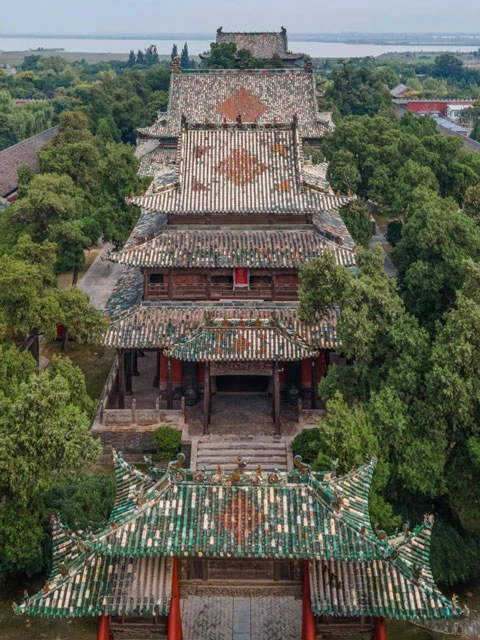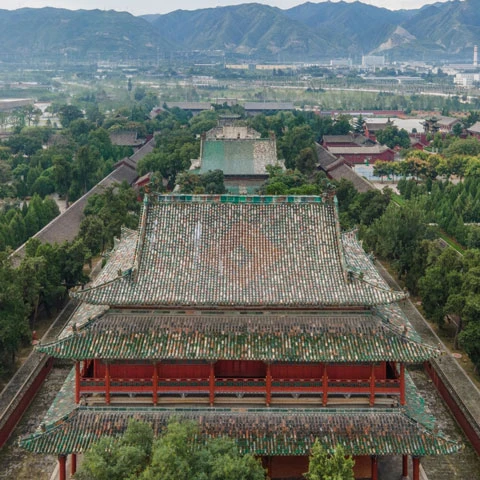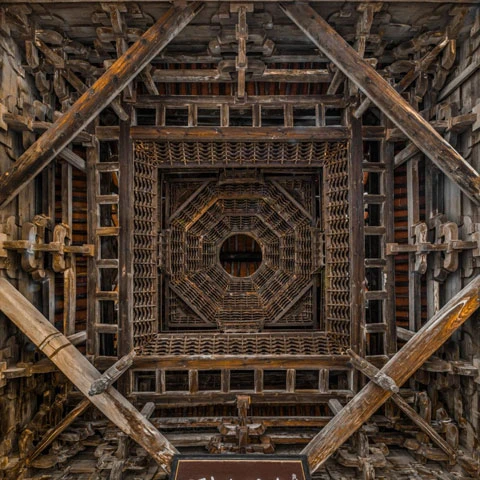When it comes to above-ground cultural relics in China, Shanxi stands out. Among the country's important cultural heritage sites, Shanxi ranks first with 531 sites, accounting for 10.4% of the total number of cultural heritage sites in China, which is equivalent to the sum of the rankings of the next ten provinces.
Shanxi boasts a complete sequence of ancient architectural eras, a wide variety of architectural types, and a large number of existing wooden structures dating back to the Yuan Dynasty and earlier, surpassing all other provinces in the country.
In other words, if you want to explore the development of early Chinese architecture, you can only gain insight in Shanxi. So, what should you visit when you first arrive in Shanxi? The following are 35+ key cultural relics units in Shanxi organized in chronological order by Useless Rerearch Society, take a look at the stunning scenery of China's ancient architecture.
Northern and Southern Dynasties
01 Yungang Grottoes
From 460 AD onwards, the Northern Wei Dynasty, with Datong as its capital, exerted its full strength and gathered excellent craftsmen to carve the magnificent Yungang Grottoes on the cliffs of Lingyan.
The Yungang Grottoes were not only the first royal-authorized grottoes in China, but also the earliest ones, with the most profound influence of the Hu style, reflecting the origins and connections with major civilizations around the world.
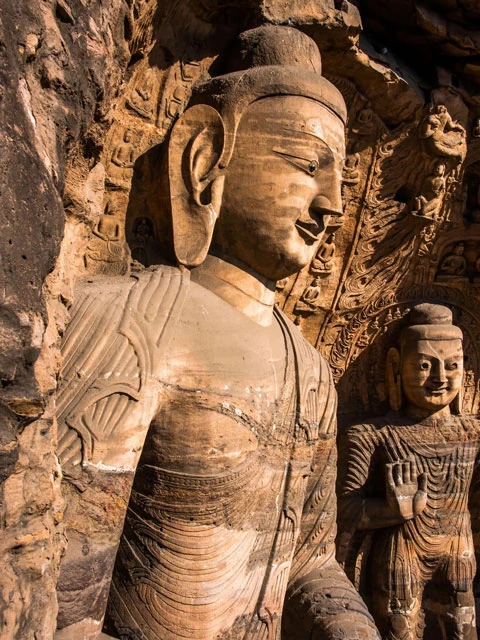
02 Tianlongshan Grottoes
In contrast to the fame of the Yungang Grottoes, the Tianlongshan Grottoes, characterized by exquisite craftsmanship, also hold great significance.
The Tianlongshan Grottoes were initially carved during the Northern Wei Dynasty and continued to be expanded during the subsequent dynasties of East Wei, North Qi, Sui, and Tang, documenting the changes in Buddhist art from the East Wei Dynasty to the Tang Dynasty.
The Tianlongshan Grottoes' sculptures combine the elegance and softness of Indian Buddhist statues with the fresh rhythms and lines inherent in traditional Chinese carving. The exquisite craftsmanship displayed is truly awe-inspiring.
Tang Dynasty and Five Dynasties
01 Foguang Temple
Tracing the splendor of the Tang Dynasty a thousand years ago and witnessing the wooden structures of that prosperous era has become the ideal pursuit for every enthusiast of ancient architecture. The Foguang Temple, discovered in Wutai Mountain, Shanxi in 1937, is a testament to the grandeur of the Tang Dynasty.
The main building of Foguang Temple, the East Main Hall, was reconstructed in the 11th year of the Tang Dynasty (857 AD). The wooden structure, Tang Dynasty murals, Tang Dynasty statues, and Tang Dynasty inscriptions in the East Main Hall were hailed by Mr. Liang Sicheng as the "Four Marvels of the Tang Dynasty."
02 Nanchan Temple
In comparison to Foguang Temple, Shanxi is also home to an even older wooden structure - Nanchan Temple, which is the oldest existing wooden structure in China and even in the world. Nanchan Temple consists of the Guanyin Hall, the Bodhisattva Hall, the Shi Wang Hall, and the Great Buddha Hall, with the latter being built in the third year of the Jianzhong period of the Tang Dynasty (782 AD).
Although the Great Buddha Hall is small in scale, it is exquisitely crafted and showcases the simple and grand artistic style of the Tang Dynasty.
03 Tiantai'an
Tiantai'an, once known as one of the four remaining Tang Dynasty wooden structures, was later found to have inscriptions during a major renovation, revealing that it was actually built during the Five Dynasties period.
Tiantai'an is a monastery of the early Buddhist sect "Tiantai Zong" in China. Its overall style continues the architectural characteristics of the late Tang Dynasty. The eaves are of great scale, and the lines of the roof are rich in variations, making it highly enjoyable to behold.
04 Zhen Guo Temple, Wanfo Hall
Wanfo Hall of Zhen Guo Temple also retains the style of the Five Dynasties period. It is one of the three surviving Five Dynasties buildings in Chinese Buddhist temples, and its colored sculptures are the only surviving Five Dynasties works in temple buildings nationwide.
05 Dayun Monastery
The existing Great Buddha Hall of Dayun Monastery in Pingshun County, Shanxi, has a gentle slope and a simple and ancient form, embodying the distinctive style of the Tang Dynasty.
The bracket sets of the Great Buddha Hall are the earliest known examples of wooden structures in China and serve as a living fossil of the evolution of Chinese wooden architecture from the modular system of the Tang Dynasty to the construction method of the Song Dynasty.
06 Yuhuang Temple
Yuhuang Temple, a small temple in a village with few visitors, preserves three early wooden structures from the Five Dynasties, Jin, and Yuan periods.
Among them, the most precious is the central hall, which dates back to the Five Dynasties. The entire building is robust and rugged, with concise and powerful joints.
Liao Dynasty
01 Timber Pagoda in Ying County
The Ying County Timber Pagoda, also known as the Pagoda of Fogong Temple, is the oldest and tallest extant wooden tower-style building that can be climbed in the world. It was built in the second year of the Qingning period of the Liao Dynasty.
The Timber Pagoda is octagonal in shape, with five layers and six eaves in appearance, but it actually consists of nine layers with five visible and four hidden. The pagoda uses a total of 54 different types of dougong brackets. With its variety of dougong types and exquisite design.
02 Mahavira Hall in Shanhua Temple
Shanhua Temple is one of the most well-preserved temples from the Liao and Jin periods in China, with the most complete layout. The main buildings, aligned along the central axis, include the Tian Wang Hall, the San Sheng Hall, and the Mahavira Hall.
The Mahavira Hall is the largest building in Shanhua Temple and the only surviving Liao Dynasty structure in the temple complex that was not destroyed by war.
03 Huayan Temple
Huayan Temple is one of the earliest and most well-preserved temple complexes from the Liao and Jin periods in China. The temple, facing west and oriented towards the east, embodies the lifestyle of the Khitan people of the Liao Dynasty, who "honored the east and lived according to the movement of the sun."
Among them, the Baojia Jiaocang Hall, is the oldest building in the temple and a typical representative of Liao Dynasty wooden architecture.
Song Dynasty
01 Jin Temple
Located at the foot of Xuanweng Mountain in the southwest of Taiyuan City, Shanxi Province, there is a millennium-old shrine called the Jin Temple, which integrates ancient Chinese temple architecture, gardens, sculptures, murals, and stone inscriptions.
The most magnificent and oldest large-scale building in the Jin Temple is undoubtedly the Sheng Mu Hall. It was built during the Tian Sheng period of the Northern Song Dynasty and is a representative work of Song Dynasty architecture in China.
02 Ji Wang Temple
Hidden in Taizhao Village, Nanzhang Township, Wanrong County, there is a Ji Wang Temple. Although it may not be conspicuous, it has a remarkable background, with the highest architectural form and the oldest age.
The main hall in the temple is the only surviving Song Dynasty hip roof style wooden structure among the existing domestic Song Dynasty wooden structures.
03 Chongming Temple
Chongming Temple was built during the Kaibao period of the Northern Song Dynasty, before the promulgation of the Song Dynasty's "Yingzao Fashi". The central Buddha hall in the temple is an original Song Dynasty structure and the earliest surviving Song Dynasty architecture in Gaoping city.
In particular, the pair of "broken beam" structures inside the hall are unique in structure and can be called a stroke of genius. They are a creative example of ancient folk craftsmen utilizing materials and making the most out of small materials.
Jin Dynasty
01 Chongfu Temple
Chongfu Temple, originally built in the Tang Dynasty, was expanded during the Jin Dynasty. Facing north and south, it has a grand scale and is an ancient temple with a cluster of halls and pavilions.
Among them, the Mituo Hall is a Jin Dynasty structure, located in the rear section of the central axis of Chongfu Temple. It has a width of seven bays and a depth of four bays, with a majestic and grand appearance. Among the ancient wooden structures in China, it is one of the largest.
02 Pingyao Confucius Temple
Pingyao Confucius Temple consists of six courtyards, with the central axis from south to north including the Ying Bi, Lingxing Gate, Panchi, Dacheng Gate, Dacheng Hall, Minglun Hall, Jingyi Pavilion, and Zunjingge.
It was first built in the early years of the Tang Dynasty, and the Dacheng Hall was rebuilt in the third year of the Jin Dynasty's Dading period (1163), and it has remained in its original form to this day. It is the oldest hall among all the existing Confucius Temples in China and the only surviving Jin Dynasty architecture.
03 Erxian Temple in Xixi
Among the many Erxian Temples in the southeast of Jin, the Erxian Temple in Xixi, Lingchuan County, was the first to be established and has the most exquisite architecture, grand scale, and complete preservation.
In Lingchuan, large halls from the Song and Jin Dynasties are not uncommon, but compared to that, towers and pavilions from the same period are much rarer.
The Xixi Erxian Temple has a Shuzhuang Tower on both the east and west sides of the rear hall, which preserves the architectural form of the Jin Dynasty towers. The upturned eaves and delicate corners of the eaves and the flat base are exquisitely crafted, truly restoring the image of the towers in the Jin Dynasty murals.
04 Zetian Temple
In Wenshui County, the hometown of Empress Wu Zetian, there is a temple dedicated to her called the Zetian Temple, which is the only temple in the country dedicated to a female emperor.
The temple was initially built in the seventh year of the Tang Dynasty's Tianbao period, and the existing main hall is a Jin Dynasty original structure. The cleverly designed beam structure inside the hall is worth seeing.
05 Wangbao Village Theater Stage
Wangbao Village in Gaoping, Shanxi Province, has existing buildings from the Jin, Ming, and Qing Dynasties.
Among them, the theater stage is a Jin Dynasty structure, with a width of one bay and a depth of four beams. It has a single-eave gable roof and a base that adopts the typical stupa style commonly used in Jin Dynasty architecture. It is a pavilion-style building and the earliest surviving theater stage in China.
Yuan Dynasty
01 Yongle Palace in Ruicheng
The Yongle Palace is the largest and most well-preserved Taoist temple in China, housing four exquisite wooden structures from the Yuan Dynasty: the Longhu Hall, the Sanqing Hall, the Chunyang Hall, and the Chongyang Hall.
The most splendid feature is the 1,000-square-meter mural painting from the Yuan Dynasty inside the halls, showcasing various styles such as meticulous and colorful figure paintings as well as landscape paintings, earning it the title of "Eastern Art Gallery" and a masterpiece in the history of world art.
02 Shuishen Temple
Many visitors to Guangsheng Temple only know about the Feihong Pagoda, but are unaware of the murals inside the Shuishen Temple.
The Shuishen Temple's Mingying Wang Hall is adorned with nearly 200 square meters of Yuan Dynasty murals, hailed as the third treasure of cultural relics in Guangsheng Temple. It is the only large-scale Yuan Dynasty theatrical mural preserved in China.
03 Chenghuang Temple in Lu'an
The City God Temple in Lu'an Prefecture was built to worship the City God and is one of the largest and most well-preserved ancient architectural complexes among the known City God Temples nationwide.
The main hall and corner halls of the existing City God Temple were built in the Yuan Dynasty, while the opera stage, and Xuanjian Tower were built in the Ming Dynasty. The corridors, pavilions, and side halls were constructed in the Qing Dynasty.
04 Chenghuang Temple in Yuci
The City God Temple in Yuci was first built in the 22nd year of the Yuan Dynasty's Zhiyuan Era and is well-preserved.
The main hall of the temple is delicately crafted, and there is a magnificent Xuanjian Tower in front of the main hall. In 1999, the Xuanjian Tower was recognized by the World Historical and Cultural Site Protection Foundation as one of the "100 Most Exquisite Ancient Buildings in the World."
05 Douci
Built in commemoration of Dou Chou, a high-ranking official in the Jin State during the Spring and Autumn Period, the Temple of Douci boasts a simple and rustic overall structure with unique design concepts.
As a Yuan Dynasty architectural marvel, the Douci not only reflects the flexibility and bold creativity of Yuan Dynasty construction techniques, but also showcases the features of rural architecture in terms of location selection and the layout and functions of rural sacrificial buildings, exuding a strong local character.
06 Stage in Houtu Temple
The Dongyang Houtu Temple's Xitou Stage was first built in the 20th year of the Yuan Dynasty's Zhiyuan Era. What is even more astonishing is that the entire stage has no large beams, but instead relies on a layered combination of bracket arches and well frames, forming an "Eight Trigrams" style roof, making it a unique masterpiece of ancient Chinese architecture.
On the back wall of the Houtu Temple's stage, there is also a lifelike mural from the Yuan Dynasty titled "Zhong Kui Subduing Demons."
Ming Dynasty
01 Hanging Temple
The Hanging Temple, nestled in the mountains, is a unique temple that combines Confucianism, Buddhism, and Taoism.
From a distance, the three-story temple gradually rises from south to north along the mountain, with temples and pavilions arranged in a staggered manner. They are connected by suspended walkways, creating a breathtaking sight.
02 Nine-Dragon Wall of the Prince Dai Residence
The Datong Nine-Dragon Wall was originally a decorative in front of the Duanli Gate of the royal mansion of Zhu Gui, a prince of the early Ming Dynasty. It is the earliest and largest existing Nine Dragon wall in China.
03 Bianjing Tower
Bianjing Tower, also known as Qiao Tower or Gu Tower, stands at the highest point of the ancient city, serving as a strategically important military building for observing enemies and commanding operations. It is renowned as the first tower of the Great Wall.
Bianjing Tower is magnificent and extraordinary, with a solid structure that has stood for over five hundred years.
04 Twin Towers of Yongzuo Temple
The twin towers inside Yongzuo Temple, also known as Lingxiao Twin Towers, were built during the Wanli period of the Ming Dynasty, and they are the tallest ancient architecture in Taiyuan, Shanxi Province.
The "Wenfeng Pagoda" and the "Relic Pagoda" in Yongzuo Temple are like a pair of twin sisters, towering and elegant, with vibrant colors, displaying a bold and sturdy style that complements each other.
05 Guangsheng Temple Feihong Pagoda
The Feihong Pagoda of Guangsheng Temple was rebuilt in the tenth year of the Zhengde reign of the Ming Dynasty. The pagoda has an octagonal shape and consists of 13 floors. The body of the pagoda is made of green bricks, and each floor has a glazed eave, displaying exquisite craftsmanship and dazzling brilliance.
The Feihong Pagoda is the most well-preserved ancient glazed pagoda in China, and the glazed tiles on the entire pagoda reflect the superb craftsmanship and wisdom of the people of Shanxi.
06 Wenfeng Pagoda in Fenyang
The Wenfeng Pagoda in Fenyang was built in the late Ming Dynasty and early Qing Dynasty. The pagoda has 13 floors and stands at a height of 84.97 meters. It not only ranks first among all the brick-structured pagodas in China, but also holds the top position among all the brick-structured pagodas in the world. It is renowned as the "Top one Pagoda in China".
Qing Dynasty
01 Wanrong Fei Yun Lou
Fei Yun Lou is located within Dongyue Temple, with its pure wooden structure, exquisite and delicate, known as the "Top one Wooden Tower in China".
The entire building is densely covered with arches, and the shapes are extremely varied, like a gathering of clouds and wind, with blooming flowers, and is known together with Ying County Wooden Pagoda as the "Southern Tower and Northern Pagoda".
02 Qiu Feng Lou
The main building of Wanrong Houtu Temple is Qiu Feng Lou, standing by the river, majestic and magnificent.
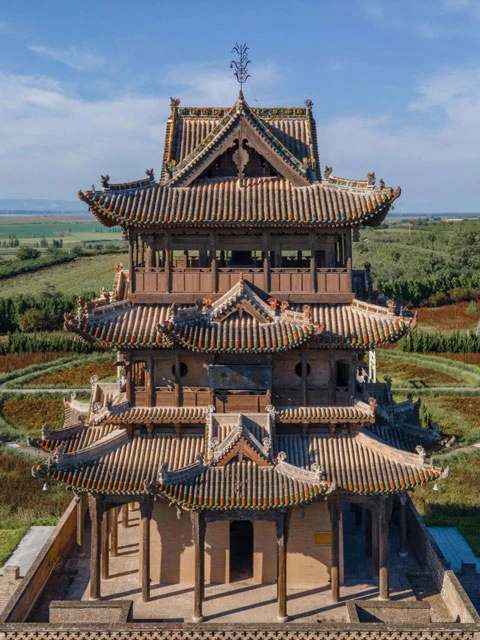
The building consists of three floors, with brick and wood structure, a cross-hipped roof, 32.6 meters high. The entire building is delicate in structure, and the shape is elegant. It is named after the inscription of Emperor Han Wu's "Qiu Feng Ci" (1271 AD) hidden in the three floors.
03 Jiexiu Houtu Temple
The glass in Jiexiu Houtu Temple is extraordinary, glass tiles and glass components are everywhere. Unlike the grand and solemn palace architecture, the various glass components in Houtu Temple are closer to daily life.
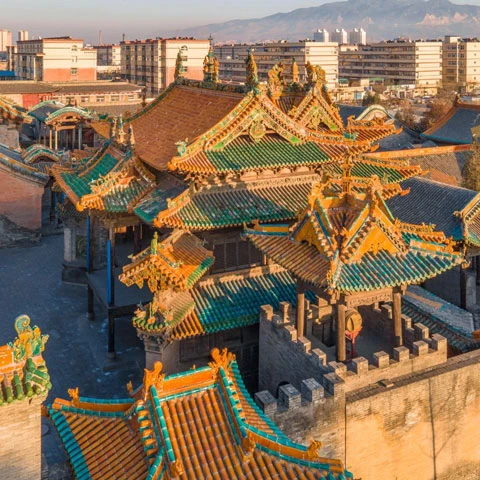
The roof extensively uses yellow, green, and blue colored glass, with lively and clever shapes, and a wide range of themes. Houtu Temple is also known as the "Glass Art Museum".
04 Jiezhou Guandi Temple
Yuncheng Jiezhou Guandi Temple is the ancestor of Wu temples, divided into the main temple and the Jieyi Garden. It is the largest existing palace-style Taoist architectural complex and Wu temple, known as the "Ancestor of Guandi Temple".
Conclusion
In addition to the ancient buildings mentioned above, there are many treasures scattered across the land of Shanxi, which cannot be listed in detail due to limited space.
In this loess plateau, thousands of years of history are condensed in every brick and tile, forming precious cultural treasures. Looking at these ancient buildings from afar, they are like imprints of time, embedded in the embrace of Mother Earth.
The majestic pagodas are like the ancient people's awe of the heavens and the earth, their exploration of the unknown; the exquisite woodcarvings, brick carvings, and glass, all reveal the craftsmen's love for life, their dedication to art. Approaching these ancient buildings, one can almost hear the breath of history.
